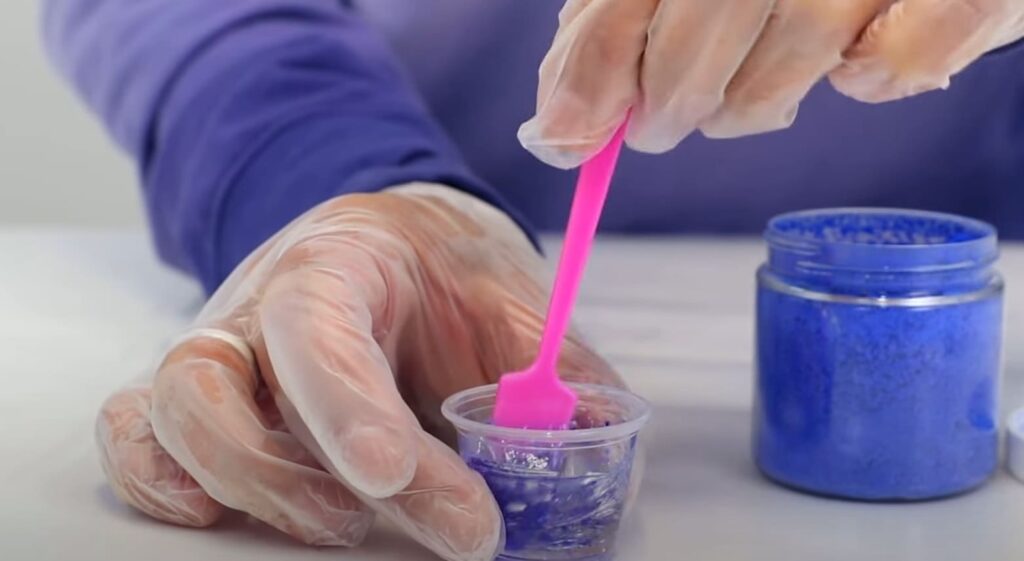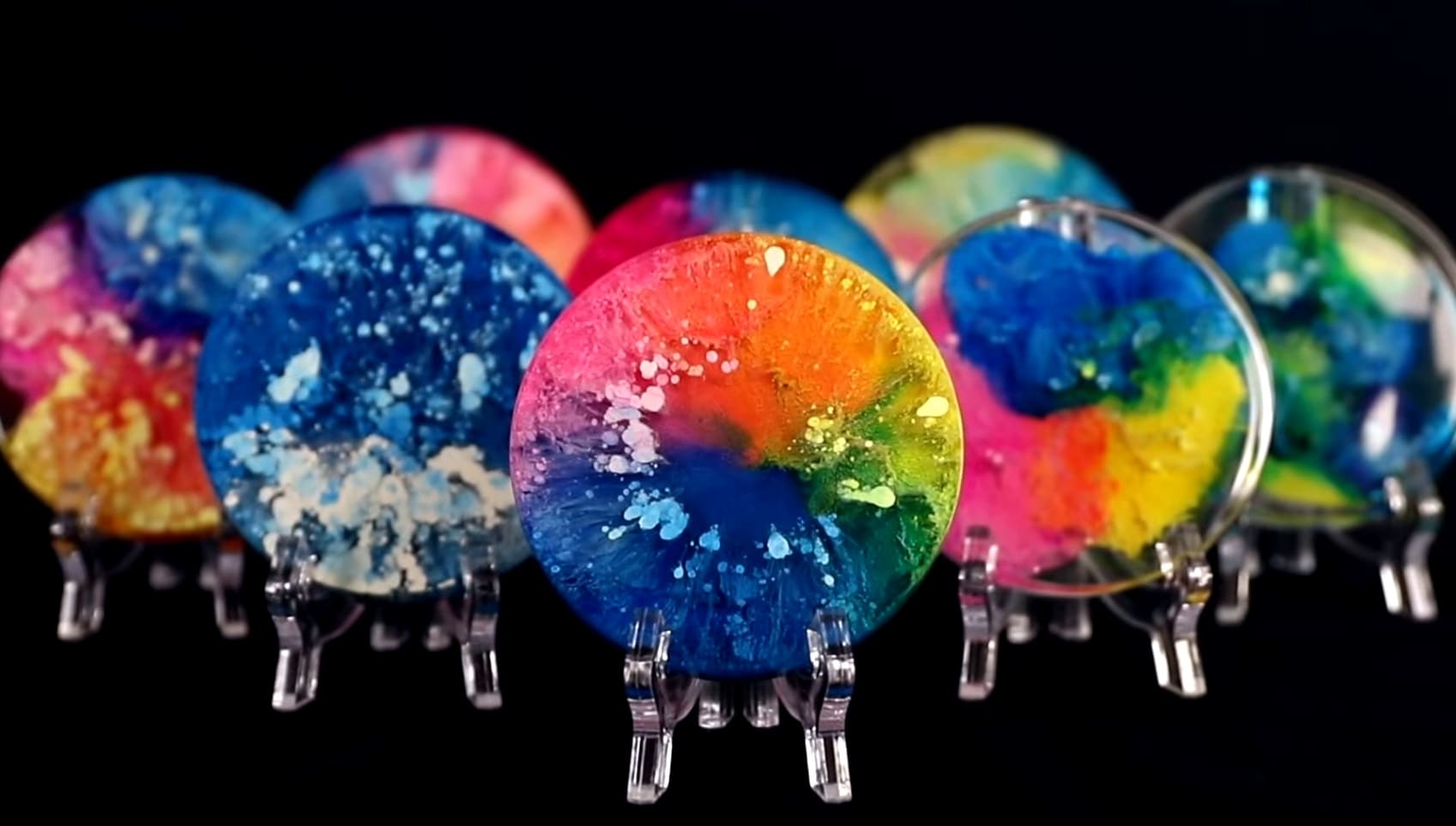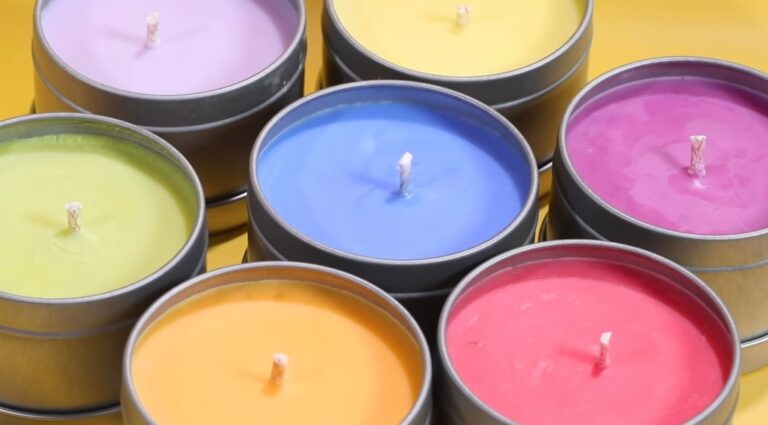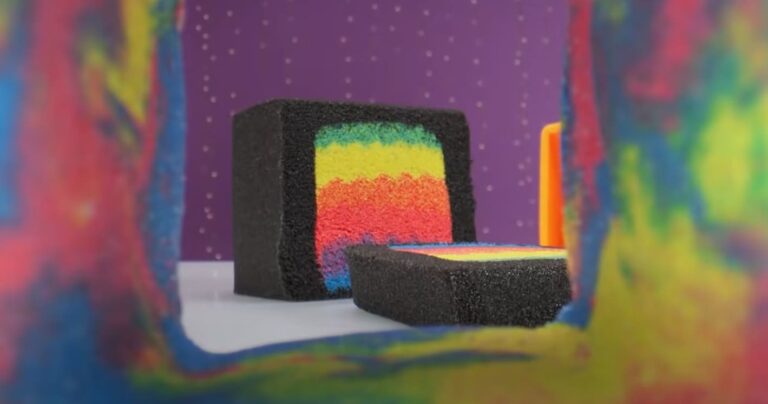Can You Mix Epoxy Resin With Paint?
Epoxy resin has become a popular medium for artists and DIY enthusiasts alike due to its versatility and durability. One common question that arises is whether epoxy resin can be mixed with paint. While it may seem like a simple solution to achieve a desired color or texture, the answer is not always straightforward. In this article, we will explore the compatibility of epoxy resin and paint, the benefits and drawbacks of mixing them, and provide some tips on successfully combining the two materials. Whether you are a seasoned artist or a beginner looking to experiment, this article will help you determine whether mixing epoxy resin and paint is the right choice for your project.
Is It Possible to Mix Epoxy Resin With Paint?
Yes, it is possible to mix epoxy resin with paint to achieve a desired color or texture. However, there are some important factors to consider before attempting to do so. Firstly, not all types of paint are compatible with epoxy resin. Oil-based paints are generally not recommended as they can prevent the resin from curing properly. Water-based paints, on the other hand, are more likely to work well with epoxy resin.
Additionally, it is important to note that mixing paint with epoxy resin can alter the resin’s properties, such as its strength and clarity. Adding too much paint can also affect the curing process, leading to a weaker and potentially tacky finished product. It is therefore important to use the right ratios and proportions when mixing epoxy resin and paint, and to conduct some test samples before committing to a larger project.
While it is possible to mix epoxy resin with paint, it is important to proceed with caution and follow proper guidelines to ensure a successful outcome.

Who Came Up With the Idea of Mixing Epoxy With Paint?
It is difficult to attribute the creation of mixing epoxy resin with paint to any one particular person or entity, as it is a technique that has been developed over time through experimentation and trial and error. Artists and DIY enthusiasts have likely been mixing epoxy resin with paint for many years in order to achieve desired colors, textures, and effects in their projects. As the popularity of epoxy resin as a medium continues to grow, so too does the experimentation and development of new techniques for using it in combination with other materials, such as paint.
For What People Begin Mixing Epoxy Resin With Paint?
Mixing epoxy resin with paint can be useful for a variety of people and purposes. Artists may choose to mix epoxy resin with paint to create unique colors and textures for their artwork, as well as to add a layer of protection and durability to their finished pieces. DIY enthusiasts may use the technique to add color and visual interest to a variety of projects, such as creating custom countertops, tables, or other decorative pieces. Additionally, some builders and contractors may use epoxy resin mixed with paint to create durable and attractive flooring or wall finishes in commercial or residential settings. Overall, mixing epoxy resin with paint can be a useful tool for anyone looking to enhance the visual appeal and durability of their creative projects.

Composition Of Paint
The composition of paint can vary depending on the type and purpose of the paint, but most paints typically consist of three main components: a pigment, a binder, and a solvent. The pigment provides the color and opacity of the paint, while the binder holds the pigment particles together and binds them to the surface being painted. The solvent is used to thin the paint and make it easier to apply, as well as to help evaporate and dry the paint after application.
In addition to these main components, paints may also contain additives such as stabilizers, fillers, and preservatives to enhance their performance and durability. Some types of paint, such as oil-based paints, may also contain additional components like drying agents or resins to help the paint cure properly.
The composition of paint can be quite complex, and can vary depending on the specific formulation and intended use of the paint. Understanding the components of paint can be important for ensuring proper application and achieving the desired results in a painting or other project.
Composition Of Mixed Epoxy Resin With Paint
When epoxy resin is mixed with paint, the composition will depend on the specific types and proportions of the materials used. As mentioned earlier, it is important to choose a paint that is compatible with epoxy resin, and to use the right ratios when mixing the two materials together. Generally, the composition of mixed epoxy resin with paint will contain the following components:
- Epoxy Resin: Epoxy resin is a two-part adhesive that consists of a resin and a hardener. The resin is typically made from a type of epoxy and a reactive diluent, while the hardener is made from a type of amine. When mixed together, the resin and hardener form a strong, durable material that is resistant to water, heat, and chemicals.
- Paint Pigments: Paint pigments are the components that provide color to the paint. When mixed with epoxy resin, pigments can be used to create a variety of colors and effects.
- Binder: The binder in the paint is responsible for holding the pigment particles together and binding them to the surface being painted. When mixed with epoxy resin, the binder helps to hold the paint pigments in place and adhere them to the surface.
- Solvent: Some types of paint may contain solvents that help to thin the paint and make it easier to apply. When mixed with epoxy resin, the solvent can help to create a smooth and even mixture.
The composition of mixed epoxy resin with paint will depend on the specific types and proportions of the materials used. It is important to follow proper guidelines and conduct test samples to ensure a successful outcome when mixing these materials together.

What Kinds Of Paint Are There?
There are several different types of paint, each with its own unique properties and uses. Here are some of the most common types of paint:
- Water-based paint: Also known as latex paint, water-based paint is a popular choice for interior and exterior use. It is easy to clean up with soap and water, dries quickly, and is low in odor. Water-based paints come in a wide variety of colors and finishes, and are often used for walls, ceilings, and trim.
- Oil-based paint: Oil-based paint is known for its durability and resistance to wear and tear. It dries slowly, which can make it difficult to work with, and requires paint thinner or turpentine for cleanup. Oil-based paints are often used for trim, doors, and furniture.
- Acrylic paint: Acrylic paint is a fast-drying paint that is water-soluble when wet but becomes water-resistant when dry. It is versatile and can be used on a variety of surfaces, including canvas, wood, and metal. Acrylic paint comes in a wide range of colors and can be used for a variety of art and DIY projects.
- Spray paint: Spray paint is a convenient and easy-to-use paint that comes in aerosol cans. It is typically used for small projects or touch-ups, and comes in a wide range of colors and finishes. Spray paint can be used on a variety of surfaces, including metal, plastic, and wood.
- Epoxy paint: Epoxy paint is a two-part paint that consists of a resin and a hardener. It is known for its durability and resistance to chemicals, abrasion, and moisture. Epoxy paint is often used for high-traffic areas, such as garages and industrial settings.
These are just a few of the many types of paint available on the market. Choosing the right paint for a particular project will depend on factors such as the surface being painted, the desired finish, and the intended use of the painted object.

With What Else I Can Mix Epoxy Resin With Paint?
While epoxy resin can be mixed with paint to create a variety of effects, there are also other materials that can be mixed with epoxy resin to achieve different results. Here are some examples:
- Pigments and dyes: Epoxy resin can be mixed with pigments or dyes to create a wide range of colors and effects. This can be a great way to add depth and interest to your epoxy resin projects.
- Glitter and metallic powders: Mixing epoxy resin with glitter or metallic powders can create a sparkly, shimmery effect that is perfect for jewelry, decorative objects, and more.
- Wood, stone, or metal powders: Adding fine powders of materials like wood, stone, or metal to epoxy resin can create a realistic, textured effect that mimics the appearance of these materials. This technique can be especially effective when creating faux finishes or decorative objects.
- Sand or other textured materials: Mixing epoxy resin with sand or other textured materials can create a rough, gritty texture that is perfect for creating textured surfaces or adding grip to functional objects.
The possibilities for mixing epoxy resin with other materials are endless. It is important to experiment and conduct test samples to ensure that the desired effect is achieved and that the materials used are compatible with the epoxy resin.

Advantages Of Mixing Epoxy Resin With Paint
Mixing epoxy resin with paint can offer a number of advantages, including:
- Improved durability: Epoxy resin is known for its strength and durability, so mixing it with paint can make the painted surface more resistant to wear and tear, water damage, and chemical damage.
- Increased adhesion: When epoxy resin is mixed with paint, it can help the paint adhere more strongly to the surface being painted. This can help prevent chipping, cracking, or peeling of the painted surface.
- Enhanced visual appeal: Mixing epoxy resin with paint can create a variety of visual effects, such as depth, translucency, and texture. This can be especially useful for creating unique finishes and artistic effects.
- Versatility: Epoxy resin can be mixed with a variety of different types of paint, including water-based, oil-based, and acrylic paints. This makes it a versatile option for a wide range of projects and applications.
- Chemical resistance: Epoxy resin is highly resistant to many chemicals, so mixing it with paint can make the painted surface more resistant to damage from chemicals and other harsh substances.
Mixing epoxy resin with paint can offer a number of benefits, depending on the specific application and the materials used. It is important to follow proper guidelines and conduct test samples to ensure a successful outcome when mixing these materials together.

Disadvantages Of Mixing Epoxy Resin With Paint
While there are many advantages to mixing epoxy resin with paint, there are also some potential disadvantages to consider. These include:
- Limited workability: Epoxy resin can have a relatively short working time, especially when mixed with paint. This can make it difficult to achieve certain effects or to make adjustments once the mixture has been applied.
- Longer curing time: Epoxy resin can take several hours or even days to fully cure, depending on the specific product and conditions. This can make it a less convenient option for projects that require quick turnaround times.
- Potential for bubbles: Mixing epoxy resin with paint can increase the likelihood of bubbles forming in the mixture. This can be especially problematic if the bubbles are not removed before the mixture is applied, as they can create unsightly blemishes or weaken the adhesion of the finished product.
- Health hazards: Epoxy resin can release harmful fumes during the mixing and curing process, so it is important to work in a well-ventilated area and to take proper safety precautions, such as wearing a respirator mask and protective gloves.
- Cost: Epoxy resin can be more expensive than other types of paint, so mixing it with paint can increase the overall cost of a project.
It is important to carefully consider the potential drawbacks of mixing epoxy resin with paint before embarking on a project. Proper preparation, safety precautions, and techniques can help minimize these disadvantages and ensure a successful outcome.

FAQ
For what unusual reason can I mix epoxy resin with paint?
Epoxy resin can be mixed with a variety of unusual materials to create unique effects and textures in a painting or other art project. Some examples include:
- Coffee grounds: Mixing epoxy resin with used coffee grounds can create a unique, speckled effect in the finished piece. This technique can be especially effective when creating abstract or naturalistic pieces.
- Crushed glass: Mixing epoxy resin with crushed glass can create a stunning, glittering effect that can be used to create jewel-like accents or to add depth and interest to a painting.
- Sand or dirt: Mixing epoxy resin with sand or dirt can create a textured, earthy effect that is perfect for creating naturalistic scenes or for adding dimension to a landscape painting.
- Wood shavings: Mixing epoxy resin with wood shavings can create a wood-like texture that is ideal for creating a faux-wood finish on furniture or decorative objects.
- Acrylic ink: Mixing epoxy resin with acrylic ink can create a colorful, translucent effect that is perfect for creating abstract or fluid art pieces.
These are just a few examples of the unusual materials that can be mixed with epoxy resin to create unique effects in a painting or art project. It is important to experiment and conduct test samples to ensure that the desired effect is achieved and that the materials used are compatible with the epoxy resin.
What should not be mixed with epoxy resin?
It is important to avoid mixing certain materials with epoxy resin, as they can cause the mixture to become unstable or ineffective. Some materials that should not be mixed with epoxy resin include:
- Water-based materials: Epoxy resin and water-based materials do not mix well and can cause the mixture to become cloudy or fail to cure properly.
- Oil-based materials: Similarly, mixing epoxy resin with oil-based materials can cause the mixture to become unstable and prevent it from curing properly.
- Strong solvents: Strong solvents, such as acetone or alcohol, should not be mixed with epoxy resin as they can weaken the mixture and cause it to become brittle or unstable.
- Moisture or humidity: It is important to keep epoxy resin dry and away from moisture or humidity, as this can also cause the mixture to become cloudy or fail to cure properly.
- Reactive metals: Reactive metals, such as aluminum or copper, should not be mixed with epoxy resin as they can cause a chemical reaction that can weaken or degrade the mixture.
In general, it is important to carefully follow the manufacturer’s instructions when mixing epoxy resin with any other materials, and to conduct test samples to ensure that the mixture is stable and effective before applying it to a larger surface.
What can’t you mix paint with?
There are certain materials that should not be mixed with paint, as they can cause the mixture to become unstable or ineffective. Some materials that should not be mixed with paint include:
- Oil-based and water-based materials: Oil-based and water-based paints do not mix well and should not be mixed together. Mixing them can cause the mixture to become unstable and prevent it from curing or drying properly.
- Different brands or types of paint: Mixing different brands or types of paint can also cause the mixture to become unstable and prevent it from curing or drying properly. It can also result in uneven color or texture.
- Excessive amount of water: Adding too much water to the paint can cause the mixture to become too thin and runny, which can affect the coverage and adhesion of the paint.
- Other solvents: Mixing paint with other solvents, such as alcohol or acetone, can cause the mixture to become too thin or brittle and prevent it from drying or curing properly.
- Reactive metals: Reactive metals, such as aluminum or copper, should not be mixed with paint as they can cause a chemical reaction that can weaken or degrade the mixture.
It is important to carefully follow the manufacturer’s instructions when mixing paint with any other materials and to conduct test samples to ensure that the mixture is stable and effective before applying it to a larger surface.
What are the dangers of paint?
Paint can be dangerous if it is not used or handled properly. Here are some potential risks associated with paint:
- Inhalation of fumes: Some paints contain solvents and chemicals that can release toxic fumes when they are applied. These fumes can be harmful if they are inhaled, causing dizziness, headaches, nausea, and other health problems. It is important to use paint in a well-ventilated area and to wear appropriate respiratory protection when necessary.
- Skin contact: Some paints can cause skin irritation or allergic reactions if they come into contact with the skin. This can be especially problematic for people with sensitive skin or allergies. It is important to wear gloves and other protective clothing when handling paint, and to wash skin that comes into contact with paint thoroughly with soap and water.
- Ingestion: Paint can be toxic if it is ingested. This can happen if paint is accidentally ingested or if it is not stored properly and a child or pet gets into it. It is important to keep paint out of reach of children and pets, and to properly dispose of any unused or unwanted paint.
- Environmental impact: Some paints contain chemicals that can be harmful to the environment if they are not disposed of properly. It is important to follow local regulations for disposing of paint and to avoid pouring paint down drains or into bodies of water.
In general, it is important to read and follow the manufacturer’s instructions for any paint product, to use it in a well-ventilated area, to wear appropriate protective clothing and equipment, and to properly dispose of any unused or unwanted paint.
How dangerous is epoxy resin?
Epoxy resin can be dangerous if it is not used or handled properly. Here are some potential risks associated with epoxy resin:
- Skin contact: Epoxy resin can cause skin irritation or allergic reactions if it comes into contact with the skin. It is important to wear gloves and other protective clothing when handling epoxy resin and to avoid direct skin contact. If skin contact occurs, the affected area should be washed thoroughly with soap and water.
- Inhalation of fumes: Epoxy resin can release toxic fumes when it is mixed or applied. These fumes can be harmful if they are inhaled, causing respiratory problems, dizziness, headaches, and other health issues. It is important to use epoxy resin in a well-ventilated area and to wear appropriate respiratory protection when necessary.
- Ingestion: Epoxy resin can be toxic if it is ingested. This can happen if it is accidentally ingested or if it is not stored properly and a child or pet gets into it. It is important to keep epoxy resin out of reach of children and pets, and to properly dispose of any unused or unwanted epoxy resin.
- Eye contact: Epoxy resin can cause irritation or injury to the eyes if it comes into contact with them. It is important to wear protective eyewear when handling epoxy resin and to rinse the eyes with water if contact occurs.
- Flammability: Epoxy resin can be flammable under certain conditions. It is important to store and use epoxy resin away from sources of heat or flame.
In general, it is important to read and follow the manufacturer’s instructions for any epoxy resin product, to use it in a well-ventilated area, to wear appropriate protective clothing and equipment, and to properly dispose of any unused or unwanted epoxy resin.
Related Video: How to use acrylic paint to pigment epoxy resin to any colour
Final Words
In conclusion, mixing epoxy resin with paint can be a great way to enhance the durability and finish of your painted surfaces. However, it is important to follow the manufacturer’s instructions and take appropriate safety precautions when handling both epoxy resin and paint. While there are many advantages to mixing these materials, there are also some potential disadvantages, such as reduced adhesion or increased toxicity. Ultimately, whether or not to mix epoxy resin with paint depends on the specific project and desired outcome. With proper preparation and care, this technique can be a useful tool for achieving high-quality, long-lasting finishes on a variety of surfaces.







